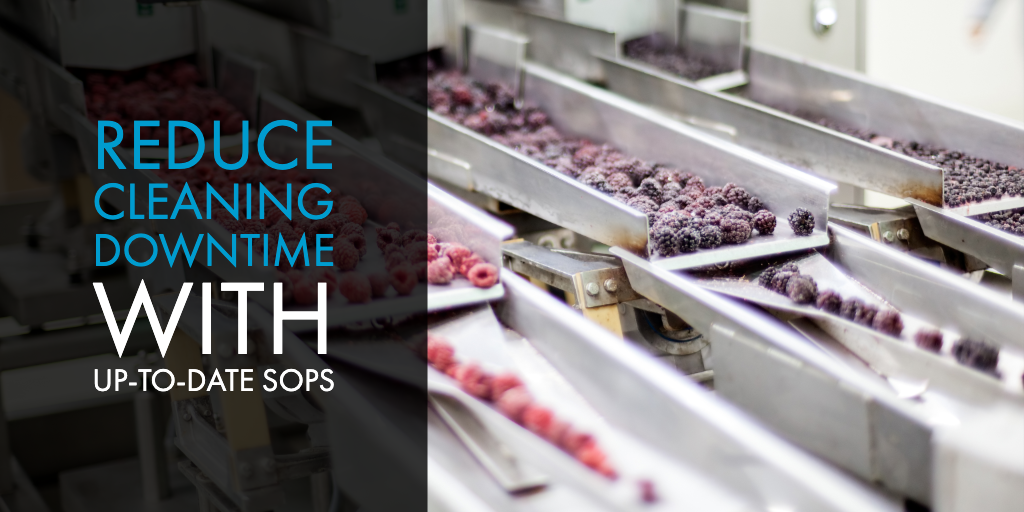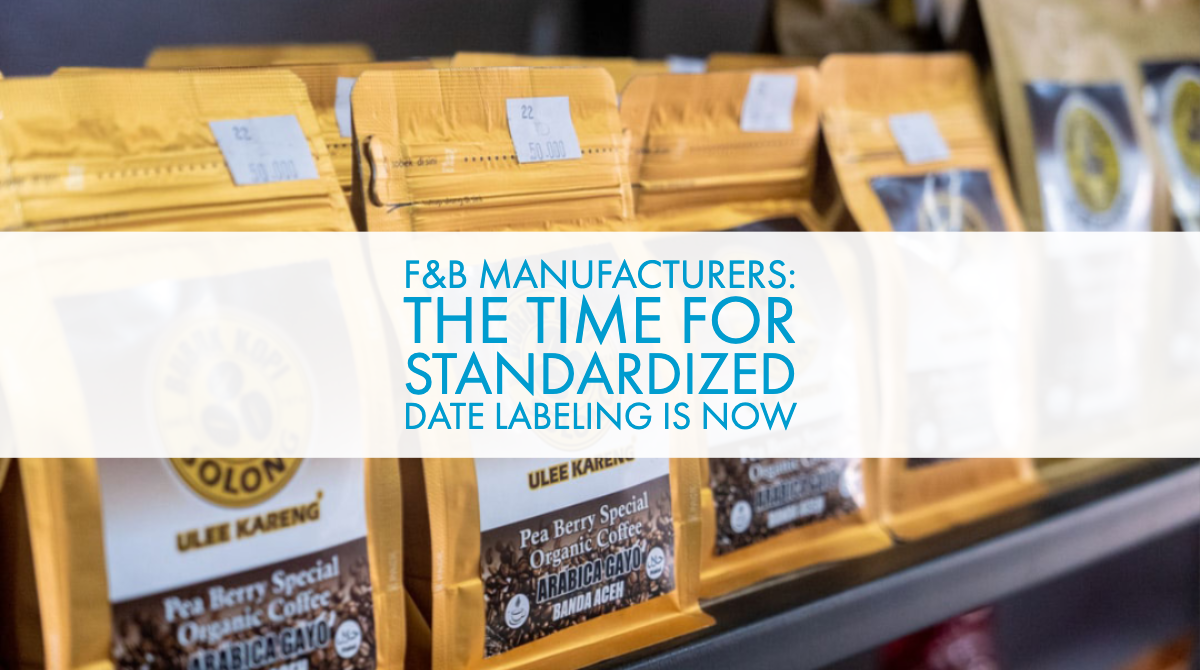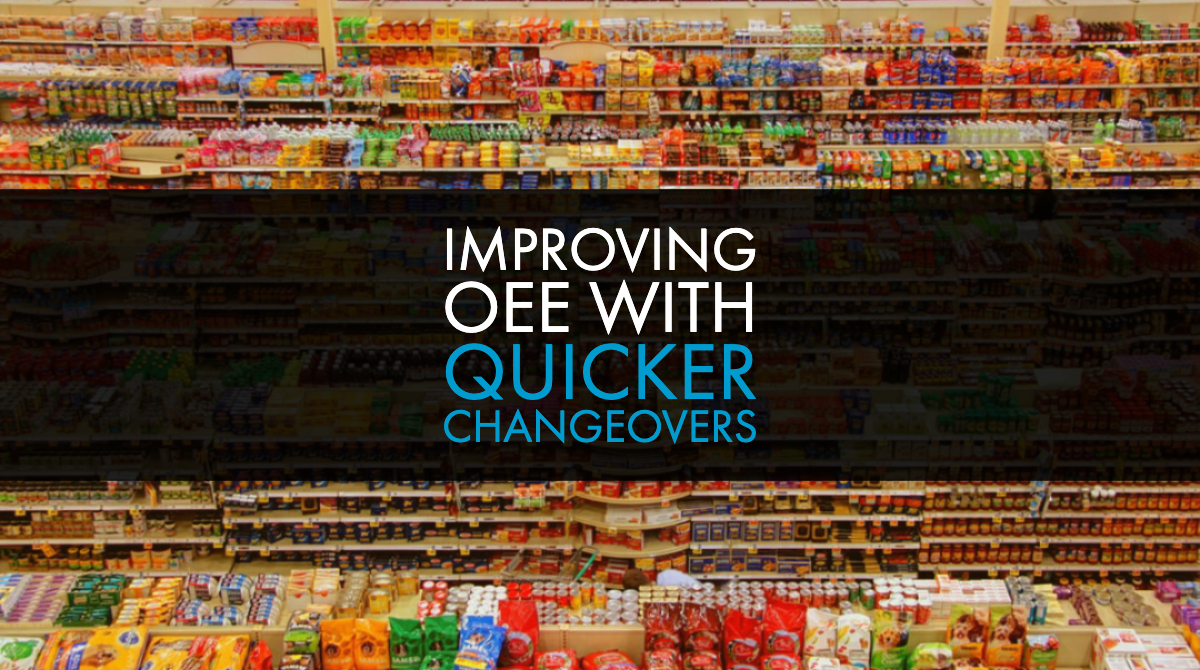In 2017, 841 outbreaks of food-borne disease were reported to the CDC. These resulted in 14 food recalls and 20 deaths. This is why no one in the food and beverage (F&B) industry wants to cut corners on cleaning and sanitizing. The costs of a food contamination incident are just too high.
Cleaning time, however, is lost production time. It eats into capacity and hits OEE metrics. F&B manufacturers would love to reduce the time needed, while still meeting FDA requirements and achieving cleanliness targets. One tool with a big part to play in this is the Standard Operating Procedure (SOP).
Why and How Cleaning is Done
F&B plants differ depending on the type of product produced. A dairy looks different to a frozen food manufacturing plant, (though similar to a brewery). However, whichever you visit you'll see stainless steel lines delivering product to mixers and vessels. There will be pumps and perhaps ovens and conveyors, and all these devices need regular cleaning.
Cleaning is required because with use all of this equipment becomes fouled. Fouling can be product-related – fat, sugar, protein and so on – or microbial. The cleaning regimen is determined by the type of fouling being addressed. Product fouling can cause cross-contamination, like chocolate flavor getting into vanilla ice cream. It also gives microbes a place to live.
Cleaning is really about removing the fouling or soil. Killing bacteria and ensuring food-contact surfaces are sterile is sanitization. Cleaning is done with detergents, often caustic, and agitation. This softens and removes the soil. Sanitizing is a rinse operation performed with chlorine, (“hypo” in industry parlance) or increasingly, peracetic acid (PAA).
Cleaning Methods
Depending on type of equipment and scale of operation F&B manufacturers have several options. These are:
- Clean in Place (CIP)
- Sterilize in Place (SIP)
- Clean out of Place (COP)
- Manual Cleaning
High volume F&B manufacturers are increasingly adopting CIP. This involves configuring lines, valves and pumps so cleaning chemicals and rinse water can be flowed through them. After following the sequence of cleaning steps production is then restarted. SIP is very similar to CIP. Equipment is configured so sanitizing solution can be run through it, followed by a rinse operation.
Not every piece of processing equipment is amenable to CIP. Mixers, blenders and wrapping machines are just a few examples. For these, COP is an alternative. This entails removing food contact parts from the equipment for cleaning in a dedicated washer.
For some equipment, and for F&B manufacturers with less capital to invest, manual cleaning is a good option. At the end of a production run the line is emptied out and covers and guards removed. Then workers can scrub with detergents to remove all traces of soil before sanitizing.
The Role of SOPs in Cleaning
Whichever type of cleaning is used, and many F&B manufacturers will combine all those listed above, it is essential that it's done in a consistently thorough manner to eliminate contamination risks. This is where SOPs are needed. These define how each cleaning activity is to be carried out and should be developed by those who understand exactly what's needed. Providing they are well-written, following these procedures will eliminate variation between shifts and individuals in cleaning methods and time taken.
Individual SOPs will explain what needs cleaning, who does it and how each task is to be performed. Temperatures, durations, speeds, chemical concentrations, tools and post-clean inspection procedures should all be addressed. Tasks covered will include:
- Preparation of detergents and sanitizers
- Removal of machine components
- Cleaning sequence to follow
- Inspection and reassembly
Using SOPs to Reduce Cleaning Downtime
Ensuring adherence to SOPs provides consistency. By standardizing changes in cleaning procedures in the SOPs, new and improved ways of working are more easily adhered to and implemented. This could be considered a cyclic process similar to the Plan-Do-Check-Act cycle. Key steps would be:
- Ensure existing SOPs are followed
- Identify and test improvements in cleaning procedures
- Document new methods in SOPs and roll these out to production
Two keys to making this process work are ensuring SOPs are available and that they are easy to follow. Too often SOPs are text-based documents that reside in plastic binders. In F&B, there's a tendency to keep these away from production areas owing to the contamination risk they present.
Tablet computers and digital delivery provide an effective means of getting SOPs to where they are needed. Importantly, this medium is also very picture and video-friendly. This provides a far more effective way of conveying information than by text alone, and also simplifies training.
A second benefit is that it's faster to put together image-based SOPs than by typing text. Third, electronic distribution is quicker and easier than printing and updating SOP binders. In addition, multi-site operations can ensure best practice is followed in all locations by sharing these digital SOPs.
Use SOPs to Document Improvements, Quickly and Effectively
Reducing downtime for cleaning increases production capacity which in turns lowers unit costs. However, the potential costs of insufficient or improper cleaning are extremely high. This leaves F&B manufacturers searching for ways to reduce cleaning time in a safe, low risk manner.
One solution is to put SOPs in digital form. This facilitates easy dissemination and updating, and allows greater use of images, along with video. As improvements to cleaning processes are identified and proven, updating the SOPs happens quickly and ensures the new methods are rolled-out consistently. Cleaning time is reduced while risks are managed and capacity increased.
Ready to start digitalizing your SOPs?






Leave a comment